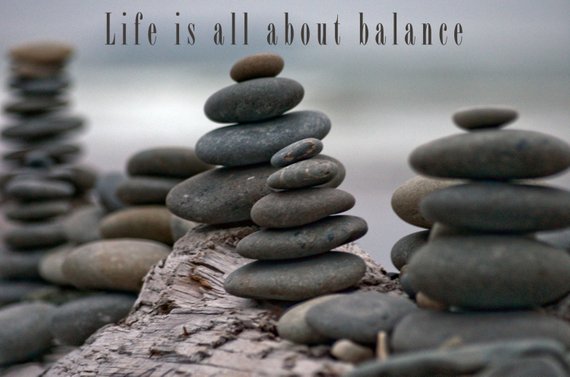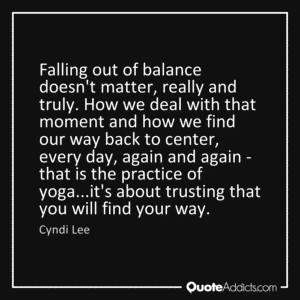“Every valley shall be lifted up, and every mountain and hill be made low; the uneven ground shall become level, and the rough places a plain.” Advent heralds the coming of a new beginning, a new world order characterized by an upended status quo – an evening out, a leveling, a balancing. In anticipation of this time, we watch, we wait, we hope, we prepare.
On the mat, we explore balance through movement and mindful breathing. By intentionally practicing physical balance (and imbalance), we watch/wait/hope/prepare for a deeper balance in our lives and in the world.
What brings you balance? How do you manage imbalance? What are your roadblocks to finding balance? How do you apply lessons learned from balancing on the mat to life off the mat?
Pose
While practicing the balance pose Vrksasana or Tree Pose, yoga teacher J. Brown suggests “being prepared to fall out with a smile on your face.” This cue is a reminder to be content regardless of whether or not you “stick” the pose. The imbalanced parts of poses are just as important, if not more important, than the balanced parts. Wobbling and falling out of balance poses are not mistakes. Rather they are a critical part of the practice. Learning to be content (smiling, breathing, non-judging) with imbalance on the mat, can develop equanimity which is transferable off the mat. So that you can approach times of imbalance in life with the same smiling, breathing and non-judging contentment.
Here are some links to balancing practices you may want to try:
Three Versions of Tree Pose, Baxter Bell, youtube.com
It’s All About Balance, Dianne Bondy, youtube.com
Finding Your Balance Off the Mat, Dianne Bondy, yogainternational.com
e·qua·nim·i·ty
/ˌekwəˈnimədē/
noun: mental calmness, composure, and evenness of temper, especially in a difficult situation.
Breathe
Victorious Breath aka Ujjayi Pranayama is the simplest of breathing techniques to balance the breath. It involves taking deep inhales and slow exhales on an even count. As the breath passes in and out of the nostrils through a slightly constricted throat, it makes a soothing, ocean wave sound. Ujjayi can be used as part of meditation, in concert with yoga poses, or any time you need to calm yourself.
Find more instruction on Ujjayi Pranayama here:
Learn the Ujjayi Breath, an Ancient Yogic Breathing Technique, Melissa Eisler, chopra.com
Practice
You can make your home practice something you look forward to by creating a unique and special environment in which to practice. In addition to having a dedicated spot to practice, this can be achieved by paying attention to the sensory aspects of your practice area. In particular, aroma can be helpful to get you more focused on your practice. You may want to start with a pre-mixed aromatherapy room spray (available locally at Health Nut Nutrition in Wyndhurst). Once you figure out what scents you like best, you can try mixing your own essential oil combinations. Here are a couple of links with guidance for using essential oils:
What You Need to Know about Essential Oils, Laine Bergeson Becco, experiencelife.com
How to Use Aromatherapy in Your Yoga Practice, Julie Gondzar, doyouyoga.com
10 Homemade Air Freshener Recipes, Jill Winger, theprairiehomestead.com
MEB


 RSS Feed
RSS Feed